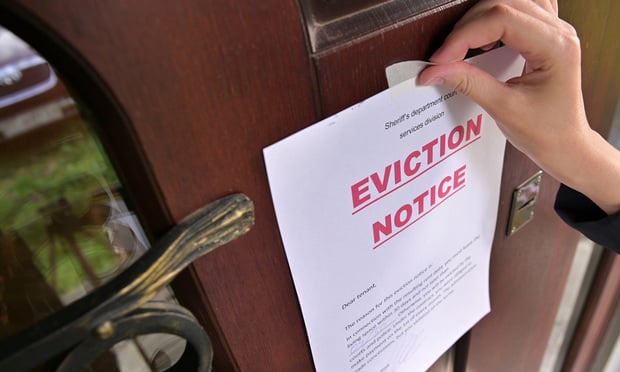Features

Warehouse Liability: Know Before You Stow!
As consumers continue to shift purchasing and consumption habits in the aftermath of the pandemic, manufacturers are increasingly reliant on third-party logistics and warehousing to ensure their products timely reach the market.
Features

New York's Good Cause Eviction Law: An Overview and Impact Analysis
The effectiveness of the Good Cause Eviction Law will largely depend on its implementation and the local adaptations that municipalities outside New York City decide to enact. Both landlords and tenants should stay informed about the specifics of how this law is applied in their respective locales and how it will be interpreted and handled in the judicial system.
Features

Post-Bankruptcy Petition Lease Claims Don't Automatically Result In An Administrative Expense Claim for Unpaid Rent
If a commercial landlord desires to request post-bankruptcy petition rent and enforcement of other terms of the lease, they should immediately make formal demand for rent and compliance
Features

Cap Rate Misery Impacts CRE Investors
The low cap rate regime became a game of musical lifeboats on the Titanic and the big question was, who would get stuck without a lifeboat as the mighty ship sank?
Columns & Departments
Co-ops and Condominiums
Condominium Purchaser Was On Inquiry Notice of Unrecorded Easement Condominium Board May Not Depart from Declaration's Funding Provisions Failure to Make Repairs Does Not Excuse Failure to Pay Common Charges
Columns & Departments
Landlord & Tenant Law
Notice Sufficient In Action to Eject Occupant Lease's Taking Clause Excuses Tenant from Payment of Rent<br Village's ETPA Resolution Upheld Landlord's Delay In Providing Itemized Statement Precludes Landlord from Retaining Any Portion of Security Deposit Assignee Liable for Breach of Lease Constructive Eviction and Warranty of Habitability Defenses Rejected
Features

Three Questions Regarding Zoning and EV Charging Stations
Owners of office and multi-family developments that install new charging stations are likely to see an increase in property values because their buildings will attract or retain EV owners. In order to facilitate and encourage more EV charging stations, municipalities need to update their zoning ordinances to regulate and manage this new land use.
Columns & Departments
Real Property Law
Tenants In Common Failed to Establish Claim of Right Element of Adverse Possession Claim Questions of Fact About Adverse Possession Claim
Features

Big Law In NYC Looking for Smaller, New Class A Spaces
Overall this year, law firms have been more likely to leave their current spaces and relocate, but they continue opting for smaller spaces.
Columns & Departments
Development
Challenge to Site Plan Approval Dismissed for Failure to Exhaust Administrative Remedies Area Variance Upheld
Need Help?
- Prefer an IP authenticated environment? Request a transition or call 800-756-8993.
- Need other assistance? email Customer Service or call 1-877-256-2472.
MOST POPULAR STORIES
- Use of Deferred Prosecution Agreements In White Collar InvestigationsThis article discusses the practical and policy reasons for the use of DPAs and NPAs in white-collar criminal investigations, and considers the NDAA's new reporting provision and its relationship with other efforts to enhance transparency in DOJ decision-making.Read More ›
- The DOJ's Corporate Enforcement Policy: One Year LaterThe DOJ's Criminal Division issued three declinations since the issuance of the revised CEP a year ago. Review of these cases gives insight into DOJ's implementation of the new policy in practice.Read More ›
- The DOJ's New Parameters for Evaluating Corporate Compliance ProgramsThe parameters set forth in the DOJ's memorandum have implications not only for the government's evaluation of compliance programs in the context of criminal charging decisions, but also for how defense counsel structure their conference-room advocacy seeking declinations or lesser sanctions in both criminal and civil investigations.Read More ›
- Lionsgate GC Who Resigned Without 'Good Reason' Got Severance PayAdd another plot twist to the storyline surrounding Corii Berg, who unexpectedly quit as general counsel of the film studio Lionsgate in December, even though he was under contract through June 2023.Read More ›
- Join Us For a Twitter Chat: Do We Need Offices Anymore?When we think about how the COVID-19 pandemic has changed the legal industry, one (frankly huge) question comes to mind: Do we really need offices anymore? As many are still working from home, meeting with clients over Zoom and some even conducting jury trials online, life of commuting to and from work seems farther away than February.Read More ›
